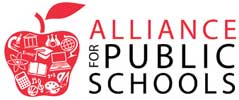After tremendous advocacy from parents and community members across the state, the Florida Department of Education finally submitted its plan on Wednesday to access $2.3 billion in remaining federal education money. Florida was the only state in the union without a plan as it was due in June causing the US Department of Education to publicly question the state earlier this week.
Florida’s 342 page plan reportedly proposes to give access to free ACT/SAT testing, provide vocational training, and increase math and reading programs.
From the Associated Press:
The plan was developed using data from statewide assessments taken last spring. Test results were available in July and then educators, parents and others were surveyed to identify areas of need.
Narrowing the achievement gap in reading and math between students from lower income families and other students is a high priority. The state Department of Education proposes hiring up to 2,000 additional reading coaches, making summer school available for students who need the most help and improving assessments to identify student progress.
The plan also calls for spending on supplies to help keep schools safer, such as personal protective equipment, hand sanitizer, cloth masks and bleach wipes.
With no sense of irony, the plan acknowledges that the state does not mandate student facemasks but goes on to say:
“At a minimum, schools should be supportive of students, teachers and staff who voluntarily wear cloth face coverings.”
More from the Associated Press:
The plan proposes spending $35 million to increase capacity for vocational training programs in the state’s college system to enable students to receive industry certifications and college credits, and $11 million more would fund equipment for K-12 and post-secondary vocational programs.
It also proposes $8 million so that 200,000 students can take the SAT and ACT at no cost.
The plan also calls for preparation for future school closures due to emergencies that require out-of-classroom instruction. It would increase the capacity for the existing virtual school program and provide all teachers training on virtual instruction.
It would provide $8 million to help schools develop plans for distance learning.
“The Instructional Continuity Plan can be deployed for periods of time ranging from a day or week, to a month, a semester or even longer if necessary,” it said.
This is a developing story and as we receive more information including a link to the actual plan, we will update this post.








